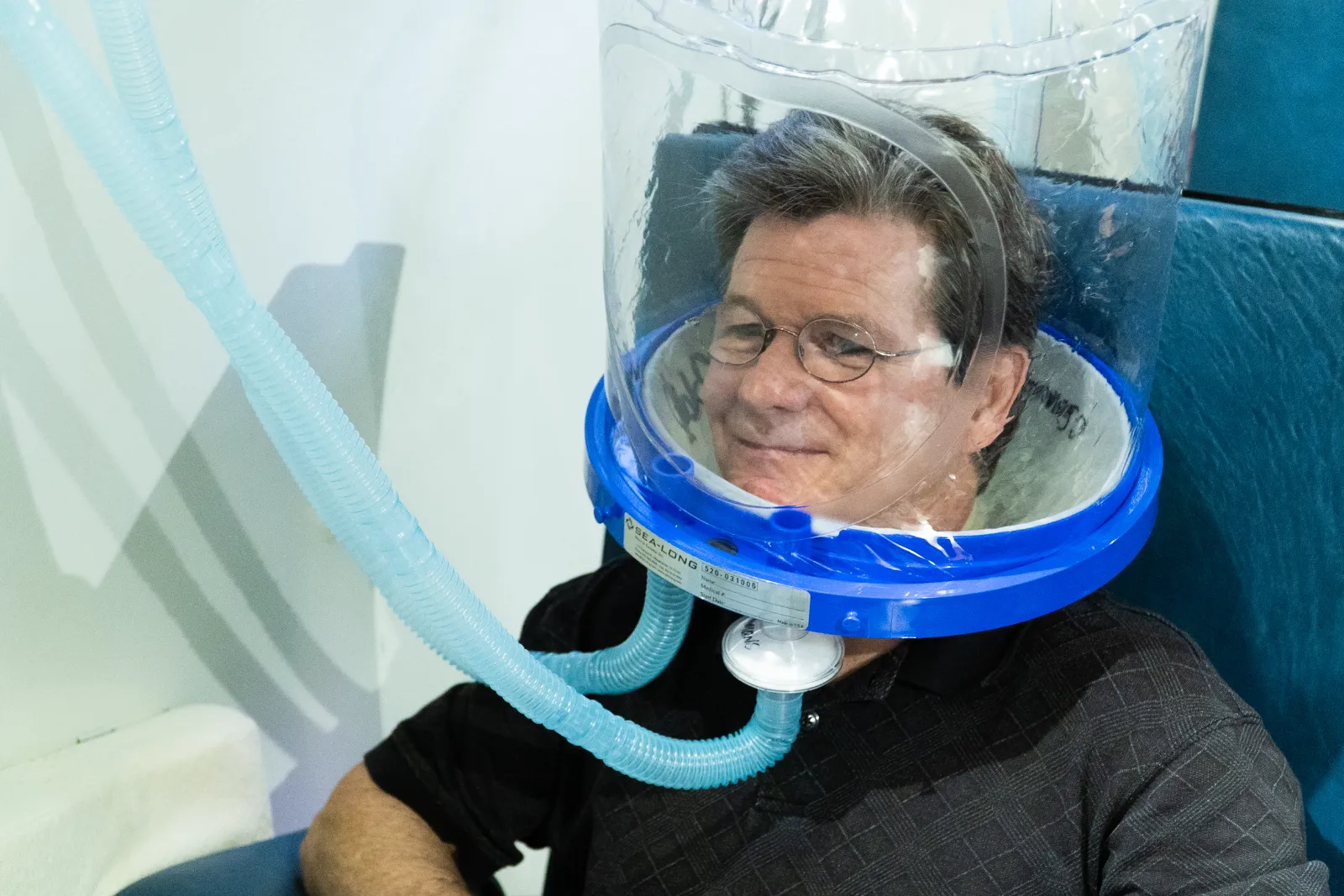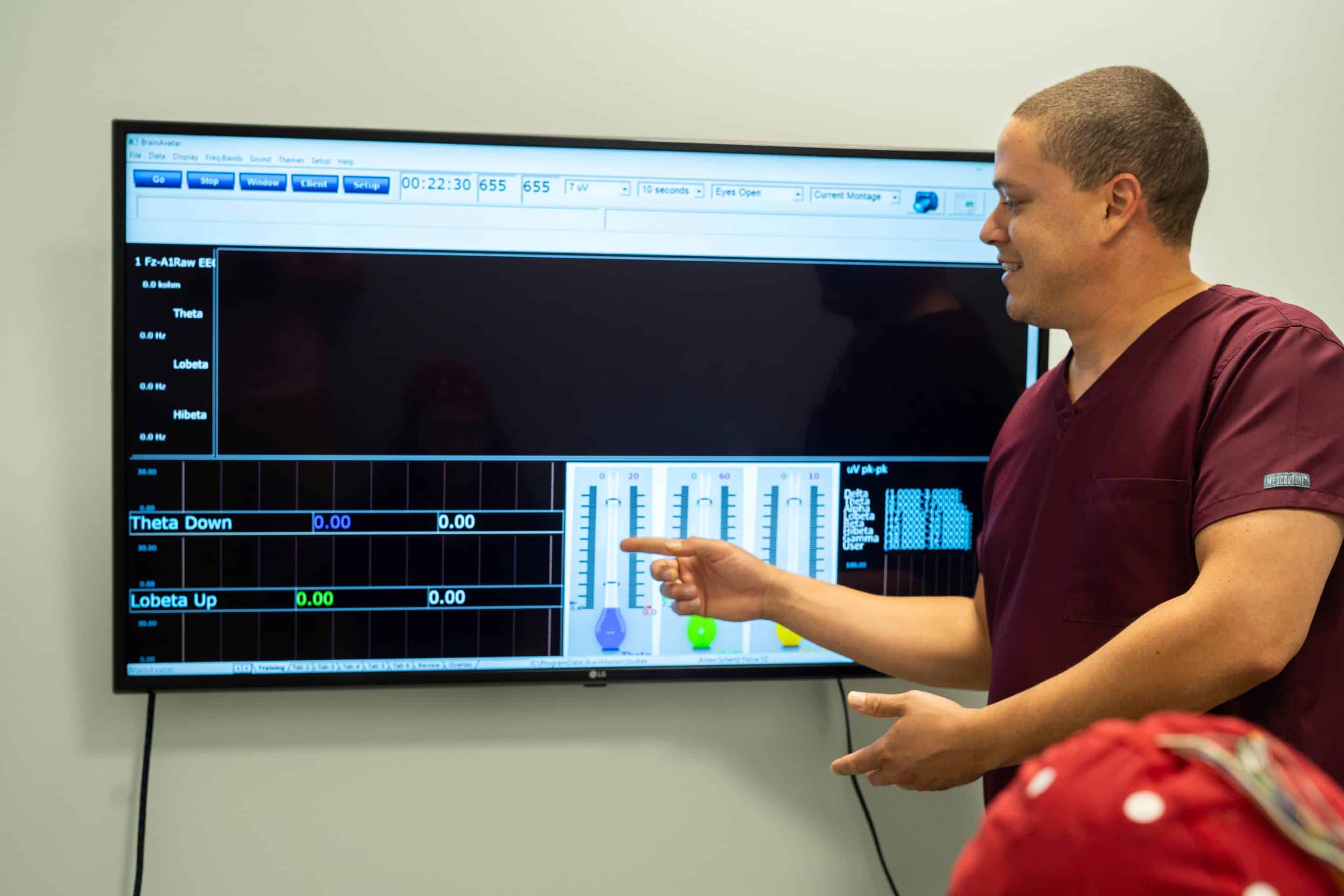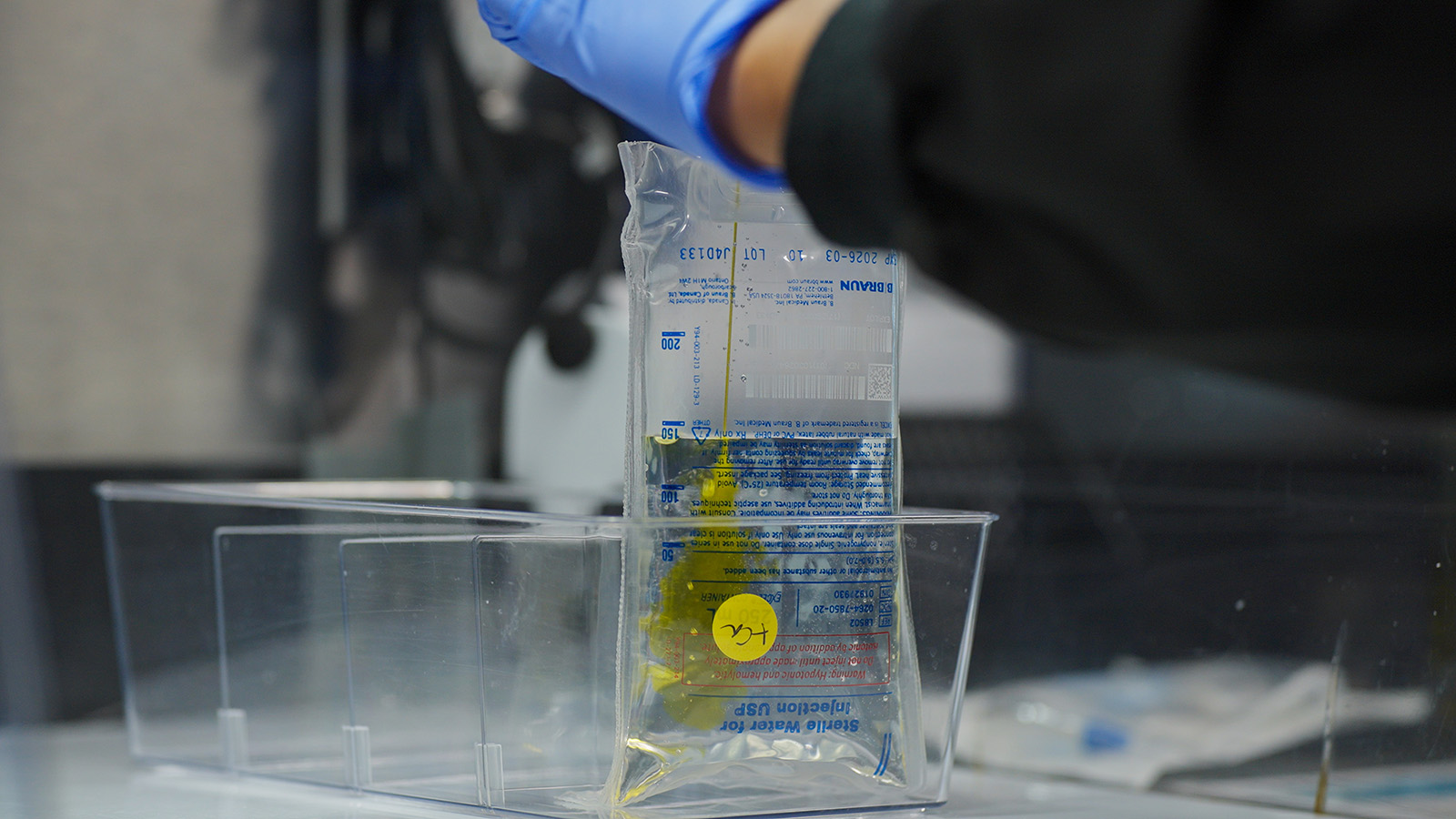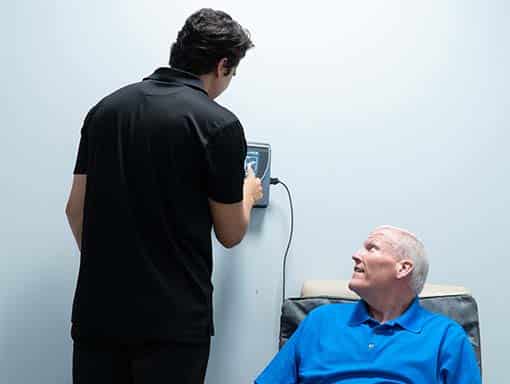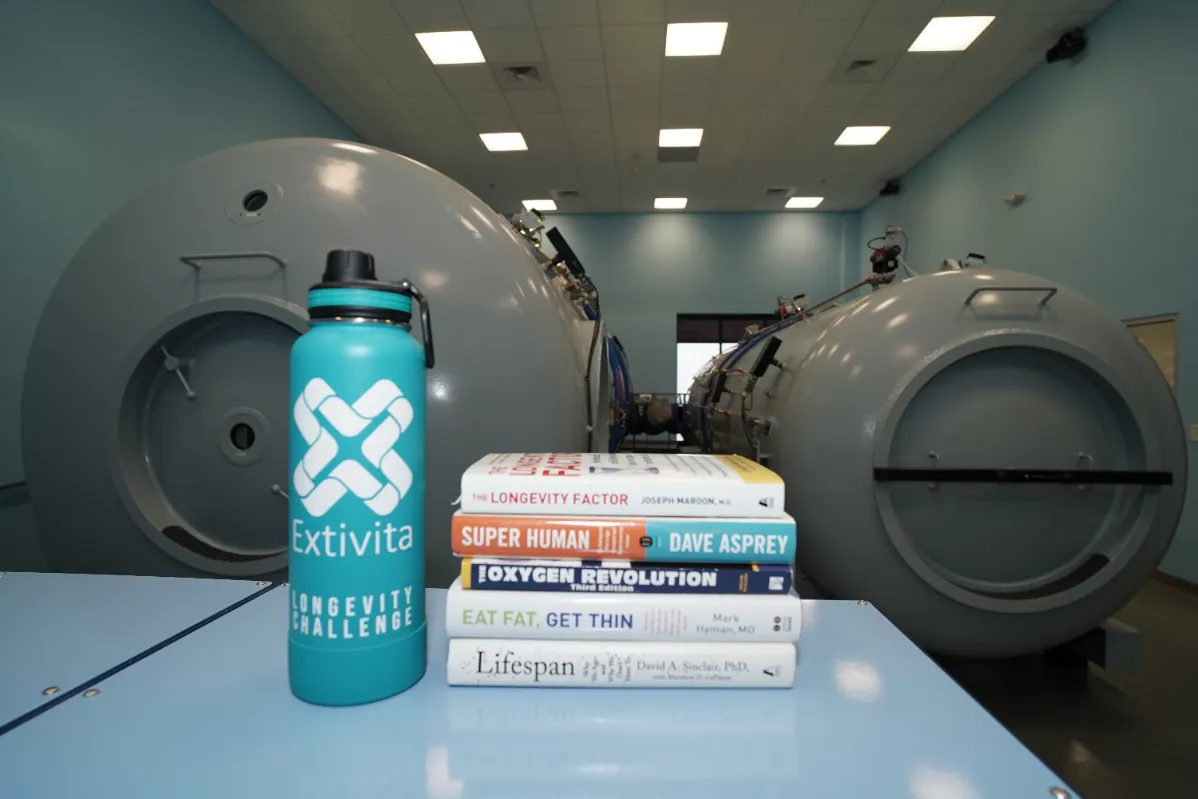Chronic Pain
Chronic pain is more than just ongoing discomfort; it is a condition that can disrupt every part of life. When pain lasts for more than three months, it can make it difficult to move, sleep, focus, and enjoy everyday activities. While it often begins with an injury or illness, it can persist long after because the body’s healing systems are stuck in a cycle that keeps pain alive.
Poor circulation plays a major role in this cycle. When oxygen and nutrients can’t easily reach injured or sensitive areas, the body’s repair process slows down. This lack of proper nourishment can leave tissues weak and vulnerable. At the same time, chronic inflammation can damage tissues further and change how nerves send pain signals—making the body more sensitive over time.
Nutrient deficiencies, especially in magnesium, B vitamins, and antioxidants, add another layer of difficulty. These nutrients are essential for calming inflammation, repairing tissues, and supporting healthy nerve and muscle function. Without them, the body struggles to break free from the pain cycle.
The nervous system can also become overactive in chronic pain conditions like fibromyalgia, neuropathy, or lingering post-injury pain. When brainwave patterns are disrupted, the brain can amplify pain signals, causing discomfort to feel more intense and constant.
Our Integrative Approach
At Extivita, we offer a comprehensive, science-backed approach to support the body’s natural healing process and break the cycle of chronic pain. Our therapies—including Hyperbaric Oxygen Therapy (HBOT), Pulsed Electromagnetic Field (PEMF) Therapy, Nutritional IV Therapy, Neurofeedback, and Infrared Sauna—are designed to work together to improve circulation, calm inflammation, replenish essential nutrients, and restore balance to the nervous system. By addressing the underlying causes of pain—such as reduced oxygen delivery, nutrient deficiencies, chronic inflammation, and nerve overactivity, we help patients heal more effectively, experience less discomfort, and regain a better quality of life.
Extivita Therapies for Chronic Pain

Hyperbaric Oxygen Therapy

Neurofeedback Therapy

Nutritional IV Therapy

Pulsed Electromagnetic Field Therapy (PEMF)

Infrared Sauna
Hyperbaric Oxygen Therapy (HBOT) for Chronic Pain
Hyperbaric Oxygen Therapy (HBOT) involves breathing 100% medical-grade oxygen inside a pressurized chamber, typically at 2.0 atmospheres absolute (ATA). This increased pressure allows your blood plasma to carry far more oxygen than normal, delivering it deep into tissues—even those affected by poor circulation, inflammation, or injury. The higher oxygen levels help reduce pain, calm inflammation, promote tissue repair, and restore healthy nerve function. These benefits make HBOT a powerful, non-invasive therapy for managing chronic pain and improving quality of life.
How HBOT Reduces Chronic Pain
Promotes Tissue Repair and Regeneration
Chronic pain often stems from damaged or slow-healing tissues. HBOT stimulates the body’s repair processes by increasing oxygen delivery to injured muscles, ligaments, and connective tissues. This promotes faster healing and helps restore normal function in areas that have been hurting for months or even years.

Reduces Inflammation in Pain-Affected Areas
Inflammation is a major cause of chronic pain. HBOT decreases swelling and reduces inflammatory markers in the body, helping to calm irritated nerves and joints. This anti-inflammatory effect can lead to less discomfort and better mobility over time.
Supports Nerve Health and Function
Many chronic pain conditions, such as neuropathy and post-injury pain, involve nerve dysfunction. HBOT supports nerve repair and reduces nerve hypersensitivity by restoring healthy oxygen levels to the nervous system, which can help decrease pain signals and improve sensation.
Improve Circulation and Oxygen Delivery
Restricted blood flow can make pain worse by depriving tissues of the oxygen and nutrients they need to heal. HBOT encourages the growth of new blood vessels and improves circulation, ensuring oxygen-rich blood reaches even the most damaged or poorly perfused areas.
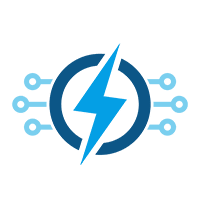
Boosts Energy and Physical Endurance
Living with constant pain can be exhausting. By enhancing mitochondrial function and increasing ATP (cellular energy) production, HBOT helps boost overall energy levels. This allows patients to stay more active, engage in physical therapy, and rebuild strength without excessive fatigue.
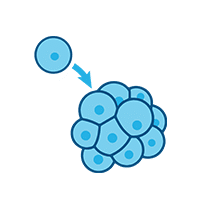
Stimulates Stem Cell Release for Long-Term Healing
HBOT can trigger a significant increase in circulating stem cells that are essential for repairing and regenerating damaged tissues. By mobilizing these cells into areas of injury or inflammation, HBOT supports long-term healing, reduces chronic pain at its source, and enhances the body’s ability to recover naturally.
Neurofeedback Therapy for Chronic Pain
Neurofeedback is a non-invasive brain training method that uses real-time monitoring of brainwave activity to help the brain learn healthier, more balanced patterns. During a neurofeedback session, sensors placed on the scalp measure brainwave activity, and specialized software provides immediate feedback through visual or auditory cues. Over time, this training helps “rewire” the brain to function more efficiently, reducing overactive pain signals and promoting better nervous system regulation. For people living with chronic pain, neurofeedback can help reduce the brain’s perception of pain, improve emotional well-being, and enhance overall quality of life.
How Neurofeedback Therapy Reduces Chronic Pain
Reduces Pain Signal Sensitivity
Chronic pain doesn’t just come from the body—it’s also influenced by how the brain processes pain signals. In many people with chronic pain, the brain’s “pain center” becomes overactive, sending stronger and more frequent pain messages than necessary. Neurofeedback works by showing the brain its own activity in real time and guiding it to create healthier, more balanced brainwave patterns. Over time, this training can quiet down the overactive nerve pathways that amplify pain, helping the brain interpret those signals more accurately. As the brain learns to stay in this calmer state, pain often becomes less intense, less frequent, and easier to manage.
Improves Stress and Emotional Resilience
Living with chronic pain can increase stress, anxiety, and depression, which in turn can worsen pain. Neurofeedback helps regulate brain activity in areas linked to mood and stress responses, allowing patients to feel calmer, more balanced, and better equipped to cope with daily challenges.

Enhances Sleep Quality and Recovery
Poor sleep can intensify chronic pain, creating a cycle that’s hard to break. Neurofeedback supports healthier brainwave patterns associated with deeper, more restorative sleep. Better rest allows the body to heal more effectively, reduces pain sensitivity, and improves energy levels during the day.
IV Therapy for Chronic Pain
Nutritional IV Therapy delivers a concentrated blend of vitamins, minerals, antioxidants, and amino acids directly into your bloodstream, bypassing the digestive system for immediate absorption. This allows the body to receive higher levels of key nutrients than it could through diet or oral supplements alone. For individuals with chronic pain, IV therapy can help replenish nutrient deficiencies, reduce inflammation, improve nerve function, and support the body’s natural repair processes.

How IV Therapy Reduces Chronic Pain
Replenishes Essential Nutrients for Pain Relief
Many people with chronic pain are deficient in nutrients like magnesium, B vitamins, and vitamin compounds that are vital for nerve health, muscle relaxation, and tissue repair. IV therapy quickly restores these nutrients, which can help reduce muscle tension, calm irritated nerves, and improve overall physical comfort.
Supports Energy and Recovery
Living with persistent pain can drain your energy and slow down recovery. IV therapy enhances mitochondrial function—the energy-producing part of your cells—allowing the body to generate more ATP for healing and daily activity. This boost in energy can make it easier to participate in physical therapy, exercise, and other activities that improve mobility and strength.

Reduces Oxidative Stress and Inflammation
Chronic pain is often fueled by ongoing inflammation and damage from oxidative stress. Antioxidants such as glutathione, delivered through IV therapy, help neutralize harmful free radicals and lower inflammation at the cellular level. This supports faster healing and can reduce pain intensity over time.
Key IV Recommendations for Chronic Pain
Myers’ Cocktail IV
Components: B-complex vitamins, Vitamin C, Magnesium, and Calcium
- B-complex vitamins support healthy nerve function and neurotransmitter production, which can help regulate pain signals and improve mood stability.
- Vitamin C provides strong antioxidant protection, helping to reduce inflammation and supports collagen production for joint and connective tissue health.
- Magnesium promotes muscle relaxation and calms nerve irritability, which can ease muscle tension and support better sleep.
- Calcium supports healthy muscle contraction and bone strength, aiding in the prevention of pain linked to muscle fatigue or skeletal stress.
Glutathione IV
Components: Reduced Glutathione
- Glutathione is a powerful antioxidant that reduces oxidative stress—a major contributor to chronic inflammation and ongoing pain—while also supporting liver detoxification to help remove toxins that may fuel inflammation and tissue damage.
- It aids in cellular repair and helps maintain immune system balance, creating a healthier internal environment for long-term pain reduction and recovery.
Pulsed Electromagnetic Field (PEMF) Therapy for Chronic Pain
PEMF Therapy uses low-frequency, pulsating electromagnetic fields to stimulate cellular function, improve circulation, and restore balance to the nervous system. This non-invasive treatment helps reduce inflammation, enhance energy production at the cellular level, and support tissue repair—making it an effective tool for managing chronic pain and improving overall quality of life without relying on medications.
How PEMF Therapy Reduces Chronic Pain
Supports Cellular Energy and Healing
Pain can slow the body’s ability to heal by draining energy and disrupting normal cell function. PEMF Therapy stimulates the mitochondria—the energy-producing centers of cells—boosting ATP production. This increase in cellular energy accelerates tissue repair and helps restore mobility and strength.
Improve Circulation and Oxygen Delivery
Restricted blood flow can make chronic pain worse by limiting oxygen and nutrient supply to injured or sensitive tissues. PEMF Therapy promotes healthy circulation, ensuring these areas receive what they need to repair and regenerate more effectively.
Calms Overactive Pain Signals
Chronic pain often results from overactive nerve pathways that send constant pain messages to the brain. PEMF Therapy helps regulate electrical activity in the nervous system, reducing hypersensitivity and calming pain signals. This can lead to lasting relief and improved comfort.
Reduces Muscle Tension
Inflammation is a key contributor to ongoing pain, especially in joints, muscles, and connective tissues. PEMF Therapy improves blood flow, promotes nutrient delivery, and reduces swelling in affected areas, which can help decrease stiffness, ease tension, and support faster recovery.
Infrared Sauna for Chronic Pain
Infrared Sauna Therapy uses infrared light to gently heat the body directly, rather than just warming the surrounding air. This allows for a more comfortable experience at lower temperatures—typically between 120°F and 140°F (49°C–60°C)—compared to traditional saunas. The deep-penetrating heat helps relax muscles, improve circulation, and reduce tension, making it a valuable therapy for those living with chronic pain.
How Infrared Sauna Reduces Chronic Pain
Eases Muscle Tension and Nerve Sensitivity
Chronic pain often leads to muscle guarding and nerve irritation. The gentle heat of an infrared sauna helps relax tight muscles and soothe irritated nerves, allowing the body to release built-up tension and reduce pain sensitivity over time.
Improve Circulation and Tissue Healing
Infrared heat causes blood vessels to expand, increasing blood flow to muscles, joints, and connective tissues. This enhanced circulation delivers more oxygen and nutrients to damaged areas, helping tissues heal faster while reducing stiffness and soreness.
Reduce Inflammation and Stiffness
The deep-penetrating warmth helps calm inflammation in muscles and joints, easing stiffness and improving mobility. This can make it easier to perform daily activities or participate in physical therapy without pain flare-ups.
Wellness Services for Chronic Pain
At Extivita, we believe that chronic pain recovery goes beyond simply reducing symptoms—it’s about restoring how you move, feel, and live every day. In addition to our integrative therapies, we offer advanced wellness programs that help patients actively participate in their own healing process. These services are designed to support physical function, improve mobility, reduce inflammation, and promote long-term resilience. Whether you are seeking relief from years of persistent pain or want to proactively protect your body from future flare-ups, our wellness offerings provide a science-backed approach to lasting comfort and function.
Longevity Challenge
Food Sensitivity Testing
Longevity Challenge for Chronic Pain
The Longevity Challenge is Extivita’s signature short-term, high-impact program designed to accelerate healing, reduce inflammation, and restore the body’s natural repair processes. Available in 5- and 10-day options, this structured wellness reset combines powerful therapies—Hyperbaric Oxygen Therapy (HBOT), Pulsed Electromagnetic Field (PEMF) Therapy, Nutritional IV Therapy, and targeted supplements such as ProImmune and trace minerals.
A medically guided fast is included to help activate the body’s natural recovery pathways. This fasting process stimulates autophagy, a cellular “clean-up” function that removes damaged cells and promotes tissue renewal. When paired with HBOT, PEMF, and IV nutrient delivery, the effects are amplified, leading to reduced pain, improved circulation, and faster muscle and joint recovery.
How Longevity Challenge Reduces Chronic Pain
Reduces Inflammation and Promotes Repair
Fasting triggers autophagy, which clears out damaged cells that can perpetuate inflammation and pain. This cellular reset, combined with HBOT and PEMF, supports the growth of healthier tissues and improved joint and muscle function.
Enhances Hormonal and Metabolic Balance
By lowering insulin levels and boosting ketone production, fasting creates a metabolic environment that reduces inflammation and supports energy stability. Elevated growth hormone levels further enhance tissue repair and collagen synthesis—both critical in chronic pain recovery.

Boosts Energy and Recovery Capacity
Fasting improves mitochondrial efficiency, allowing cells to produce energy more effectively. When paired with nutrient-rich IV therapies, increased oxygen from HBOT, cellular stimulation from PEMF, and targeted supplementation, the body receives the resources it needs to repair tissues and restore function—resulting in faster healing, greater stamina, and more sustainable long-term pain relief.
Food Sensitivity Testing for Chronic Pain
Food sensitivity testing identifies specific foods that may be triggering an immune or inflammatory response in your body. Unlike immediate food allergies, which cause rapid and obvious symptoms, food sensitivities often create low-grade inflammation that can persist for days or weeks after eating the trigger food. This inflammation can contribute to joint pain, muscle aches, headaches, fatigue, and even flare-ups of chronic pain conditions like fibromyalgia and arthritis.
How Food Sensitivity Testing Reduces Chronic Pain
Identifies Inflammatory Triggers
Many chronic pain sufferers unknowingly consume foods that worsen inflammation. By pinpointing these triggers, patients can make targeted dietary changes that reduce systemic inflammation and ease pain over time.
Supports Gut Health and Immune Balance
Food sensitivities can compromise gut lining integrity, leading to increased intestinal permeability (“leaky gut”). This allows inflammatory molecules to enter the bloodstream, fueling pain and inflammation. Removing reactive foods helps restore gut barrier function, supporting a calmer immune system and less pain.
Promotes a Personalized Pain-Management Plan
Chronic pain is complex, and recovery is often best achieved through a combination of therapies. Food sensitivity testing allows for a tailored nutrition plan that works alongside other treatments—such as HBOT, PEMF, IV therapy, and infrared sauna—to maximize healing and improve daily comfort.
Read to Begin Your Journey to Recovery?
Schedule a free Personalized Wellness Visit to explore a custom plan today.
Schedule Your Free Wellness Visit →
References:
- Pejic W, Frey N. Hyperbaric Oxygen Therapy for the Treatment of Chronic Pain: A Review of Clinical Effectiveness and Cost-Effectiveness. Ottawa (ON): Canadian Agency for Drugs and Technologies in Health; 2018 Sep 17. Available from: https://www.ncbi.nlm.nih.gov/books/NBK537956/
- Hájek, Michal, et al. “The effectiveness of hyperbaric oxygen treatment in patients with complex regional pain syndrome: A retrospective case series.” International Journal of Medical Sciences, vol. 21, no. 11, 1 Aug. 2024, pp. 2021–2030, https://doi.org/10.7150/ijms.97513.
- Birch, Nick, et al. “Home-based EEG neurofeedback intervention for the management of chronic pain.” Frontiers in Pain Research, vol. 3, 27 May 2022, https://doi.org/10.3389/fpain.2022.855493.
- Roy, Rubén, et al. “Neurofeedback for pain management: A systematic review.” Frontiers in Neuroscience, vol. 14, 16 July 2020, https://doi.org/10.3389/fnins.2020.00671.
- Na HS, Ryu JH, Do SH. The role of magnesium in pain. In: Vink R, Nechifor M, editors. Magnesium in the Central Nervous System. Adelaide (AU): University of Adelaide Press; 2011. Available from: https://www.ncbi.nlm.nih.gov/books/NBK507245/
- Carr, Anitra C., and Cate McCall. “The role of Vitamin C in the treatment of Pain: New insights.” Journal of Translational Medicine, vol. 15, no. 1, 14 Apr. 2017, https://doi.org/10.1186/s12967-017-1179-7.
- Patel, Ryan, et al. “Calcium channel modulation as a target in chronic pain control.” British Journal of Pharmacology, vol. 175, no. 12, 26 Apr. 2017, pp. 2173–2184, https://doi.org/10.1111/bph.13789.
- Bland JS. Glutathione, Orthomolecular Medicine, and Nutraceutical Therapy. Integr Med (Encinitas). 2022 Sep;21(4):16-19. PMID: 36644603; PMCID: PMC9542932.
- Yang, Xiaotian et al. “Effects of Pulsed Electromagnetic Field Therapy on Pain, Stiffness, Physical Function, and Quality of Life in Patients With Osteoarthritis: A Systematic Review and Meta-Analysis of Randomized Placebo-Controlled Trials.” Physical therapy vol. 100,7 (2020): 1118-1131. doi:10.1093/ptj/pzaa054
- Andrade, Renato, et al. “Pulsed electromagnetic field therapy effectiveness in low back pain: A systematic review of randomized controlled trials.” Porto Biomedical Journal, vol. 1, no. 5, Nov. 2016, pp. 156–163, https://doi.org/10.1016/j.pbj.2016.09.001.
- Tsagkaris, Christos, et al. “Infrared radiation in the management of musculoskeletal conditions and chronic pain: A systematic review.” European Journal of Investigation in Health, Psychology and Education, vol. 12, no. 3, 14 Mar. 2022, pp. 334–343, https://doi.org/10.3390/ejihpe12030024.
- Michalsen, Andreas. “Prolonged fasting as a method of mood enhancement in Chronic pain syndromes: A review of clinical evidence and Mechanisms.” Current Pain and Headache Reports, vol. 14, no. 2, 10 Mar. 2010, pp. 80–87, https://doi.org/10.1007/s11916-010-0104-z.
- Edwards, Sophie A., et al. “Influence of acute fasting on pain tolerance in healthy subjects: A randomised crossover study.” Frontiers in Pain Research, vol. 4, 11 Sept. 2023, https://doi.org/10.3389/fpain.2023.1153107.
- Elma, Ömer, et al. “Proinflammatory dietary intake relates to pain sensitivity in chronic nonspecific low back pain: A case-control study.” The Journal of Pain, vol. 25, no. 2, 31 Feb. 2024, pp. 350–361, https://doi.org/10.1016/j.jpain.2023.08.015.

